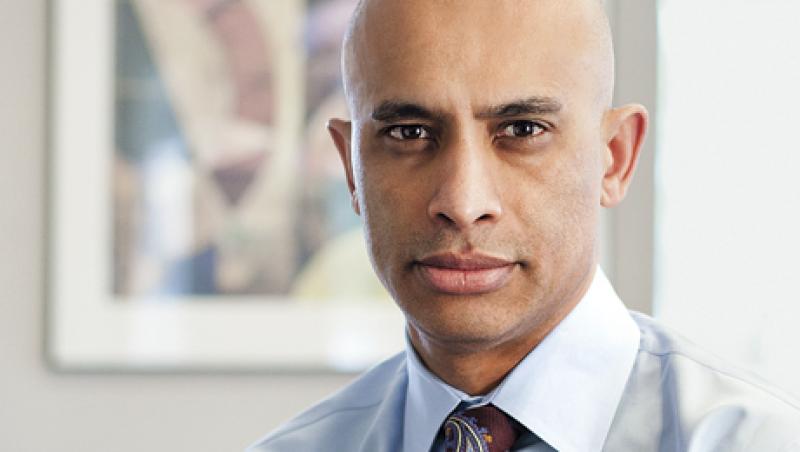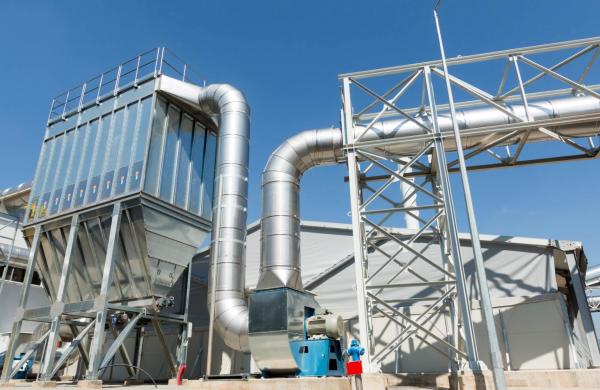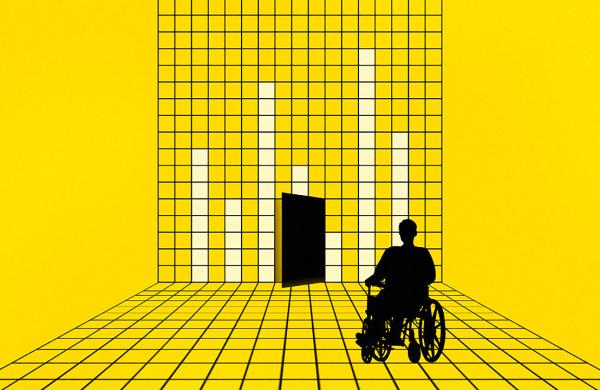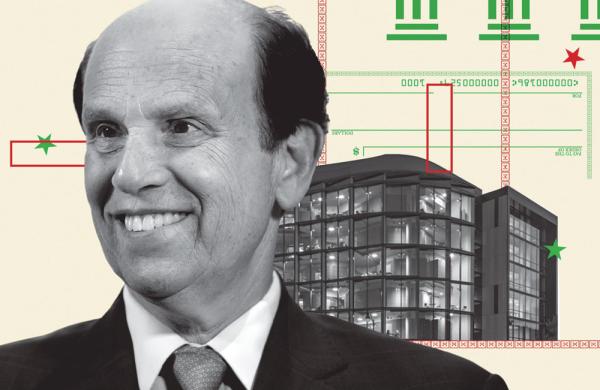SUCCEEDING A COMPANY'S FOUNDER IS NEVER easy. That’s what Abhi Talwalkar did when he joined LSI Corp. as president, CEO and director in May 2005. Milpitas, California–based electronics pioneer LSI had fallen on hard times, and long-standing investors were clamoring for a fix.
Wilfred Corrigan, the British-born engineer who had run Fairchild Camera and Instrument Corp. — considered the birthplace of Silicon Valley — launched the business as LSI Logic in 1981 with $6 million in venture capital. At the time, major U.S. and Japanese corporations ruled the electronics industry. LSI Logic focused on customized silicon chips, a niche market; by the late 1980s it dominated the business. Early in the next decade, it began offering systems and design tools too. Between 1998 and 2003, LSI acquired a dozen companies and broadened its product lines as the semiconductor business contracted. When revenue plunged in 2003, the company cut costs and jobs.
To put LSI back on its feet, the board replaced Corrigan with Talwalkar, then co–general manager of Intel Corp.’s digital enterprise group, which included the semiconductor giant’s corporate client, server, storage and communications businesses.
Talwalkar inherited a company that had expanded into everything from networking to consumer goods, including video-processing chips that went into DVD players and the Sony PlayStation video game console. With so many products, it was no longer on the leading edge of anything. But Talwalkar foresaw that people would increasingly use smartphones and other mobile devices to do things like post to Facebook and watch movies. So he decided to reinvent LSI as a specialist in semiconductors and software that would help meet the surging demand for data storage and networking. Rather than spend billions on fabrication plants, the company would streamline the design of its chips and outsource manufacturing.
Talwalkar has been busy: Between May 2006 and this January, he sold, acquired or merged 14 businesses. One of the biggest sales took place in late 2007, when LSI unloaded its mobility products group to Germany’s Infineon Technologies for $450 million. Last year LSI, which now has 4,700 employees, began to turn around. Revenue grew 9.3 percent, to $2.04 billion, while the semiconductor industry was flat overall. When Talwalkar took over, LSI stock stood at $6.13; late last month it traded at $8.66, a 41 percent increase.
The 48-year-old Talwalkar’s family moved to the U.S. from Pune, India, when he was five. He spent his early years in Boston and Portland, Oregon. The Oregon State University electrical engineering graduate worked at a slew of start-ups, including Bipolar Integrated Technology, Lattice Semiconductor and Sequent Computer Systems, now part of IBM Corp.
Talwalkar joined Intel as a contractor in 1993 and rose to oversee one of the Santa Clara, California–based company’s main business lines. A skilled and fiercely competitive Ping-Pong player, he installed tables at all of LSI’s campuses and started a tournament that now includes 1,000 participants. Senior Writer Julie Segal spoke to the CEO in New York last month about his turnaround of LSI.
Institutional Investor: You had many different business cards in your nine years with start-ups before you joined Intel — from international sales to product development and basic research. What did start-ups teach you?
Talwalkar: How to size up a problem, how to use data, how to build a fence around a problem and diagnose it. I use a lot of those skills to this very day approaching and diagnosing issues. It’s a very data-driven approach. That’s probably what I remember the most out of those early years, other than working incredibly hard and trying to absorb it all like a sponge.
Your career took off at Intel, a company synonymous with silicon chips and modern management practices. What did you learn there?
Discipline. You’re trying to anticipate where the world is going three to five years from now, because product cycles are that long. In the case of Intel, where you’re deploying a tremendous amount of capital relative to manufacturing — billions and billions of dollars — you have to get those decisions right. Otherwise you’re stuck with massive capital that’s underutilized, and it has an impact on your costs. The other key element — and it’s related — is strategic planning. Given the nature of the high-tech industry, you have to think in multigenerations of products.
Technology is a very cyclical business. How would you characterize it?
The tech industry is the most difficult industry on the planet. No other industry delivers twice the value at less cost every 12 months. The automotive industry doesn’t do that. Health care certainly doesn’t do that; it goes in the other direction. The competitive intensity is horrendous in tech — you’ve got VCs designed to disrupt established technologies and product lines.
It’s counterintuitive that the technology industry would be so cutthroat. It requires such brainpower and intellectual rigor.
It’s not as regulated, and I hate to jump on that, but I think that’s a key factor. There’s a level playing field. You’ve got Moore’s law, which will give you, simply put, more clay to work with every 18 months, so you can put more stuff on a single piece of silicon every 18 months. That allows you to keep sucking in more functionality and deliver it at a lower cost. That is the base platform for that competitive intensity. Then there’s a lot of new money being invested into start-ups through VCs looking for ways to do things differently to solve upcoming problems. Established companies have to contend with that, so that’s another catalyst for this competitive intensity.
What did you find when you got to LSI?
It was trying to do way too much in too many different markets. The company did incredibly well in the ’80s and through a large part of the ’90s, but in the late ’90s the industry around it started to change, and LSI wasn’t able to change successfully with it. That led to a strategic vacuum.
What did you do first? How did you assess the situation?
I spoke to as many employees as I could in the first 60 days to gather data. I paraded every business line through a room to get a sense for the products, their strategies, competitive positions and issues. Then I took a playbook out of my prior company: I did a strategic planning session around each of the businesses and stress-tested each around a worst-case assessment. I made the assertion that this business was going to face this set of dire consequences over the next three to five years. I said, “Prove to me that I’m wrong or confirm I’m right, and then tell me what we’re going to do about it.” That helped me to understand the pieces I had to work with and start formulating a blueprint. Then we started driving some of the immediate decisions.
What were they?
The management team was completely changed. I felt the management that we had was well suited for what we did in the ’80s and ’90s but not suited to create product franchises for the future. We started getting out of and selling all our manufacturing assets. We didn’t have the scale to do that ourselves. There were outsourced companies that had the scale to do manufacturing for a living, and that was not going to be an area of differentiation for us.
That must have been painful.
Not for me, because I had no emotion in it. The first decision we made was to sell LSI’s last fab [fabrication plant], a beautiful fab up in Gresham, Oregon. It was state-of-the-art for some companies but not quite state-of-the-art for what we needed. Unless you’re generating $15 billion to $20 billion-plus a year, you can’t have your own fabs and process technology. You’ve got to go work with the manufacturers out there.
What was one of the key tenets of your blueprint?
We felt that the growth of digital content, whether it was consumer or business, as well as the related growth in traffic on the network, whether it was a mobile network or an enterprise network, was going to present a strong, secular growth opportunity for the next ten to 15 years. No one is slowing down in the creation of data. Even through the downturn we didn’t stop creating data; we probably created more. Given that LSI had some core competencies and enough clay to work with to be relevant around dealing with that data-growth and networking set of challenges, the blueprint was around centering the company to win in these storage and networking applications. We had a good position to work with, but it needed to be shaped. It needed to be added to. We also had to get out of a number of markets that had nothing to do with that, where we had no scale.
You made some bold decisions.
Along the way we bought a company [Agere Systems] — a very large deal, a $3.7 billion deal — and within that company was a product line, the mobility products group, that did chips for cell phones. Well, you know the cell phone market is a hot market, growing and so forth. But we got out of that market because it wasn’t core to the data and networking aspects that we wanted to work on. The business had insufficient scale to compete against the Intels, Qualcomms and Broadcoms of the world. So, back to my tenets. We sold that business within six months of acquiring the company.
Talk about how you think about R&D.
One thing is the simple premise that you’ve heard many CEOs talk about but not everyone actually sticks to, which is, be No. 1 or No. 2 in the markets that you’re in or don’t be in them, period. Scale, especially in high tech, is so key because if you don’t have revenue scale sufficient to give you R&D scale, you can’t keep up with this intensity that I talked about earlier. Every nine to 12 months, you have to have a new product. If you don’t, your competition will win your business from your customers.
What trends are influencing your strategy?
Data is growing at 50 percent per year. At the same time, the mobile network is growing even faster. Believe it or not, it’s still in its infancy in terms of commerce, business, entertainment and social networking. As much as we use our iPhones, there’s so much more potential there in terms of growth.
But there are obvious challenges to that, right?
It’s putting a tremendous amount of pressure on the networks. Network traffic is growing 30 to 35 percent per year, so it’s doubling or tripling every three years. But IT budgets that companies or carriers have — let’s use AT&T or Verizon — they’re growing maybe 5 percent per year, so you’ve got a huge gap. We’ve focused the company around helping to address that gap.
So tablets and smartphones are great, but there’s a technology problem behind them.
We use them every day, but very few people understand or appreciate the churn and change that’s happening in the background — everything that drives what ends up coming onto those things: all the big data centers that have hundreds of thousands of servers; all the base stations that are running around throughout the city dealing with all that interconnectivity and communication.
Would you do another turnaround?
It’s really hard because the challenge that you have in a four- to five-year turnaround is keeping all constituents in the boat with you through that period: customers, employees, the board, investors. • •







